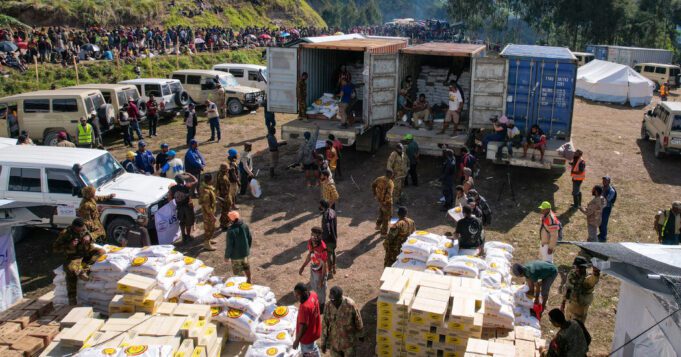Search and rescue operations are coming to an end after a landslide struck a remote community in Papua New Guinea's Enga province two weeks ago, amid signs that the disaster was not as devastating as previously thought.
Nine bodies have been recovered so far, but rescuers have struggled to make their way through the rubble, which covers a sprawling area more than a third of a mile long. Rescuers distributed food, including rice, canned fish, cooking oil, sugar and salt, to about 3,000 residents near the site.
New Zealand geological experts urged authorities to evacuate a wider area to prevent further landslides, the UN agency said, adding that the search for victims was expected to end on Friday.
“The provincial government will cease the search for bodies as the soil remains unstable, there are risks to public health and the possibility of new landslides,” the International Organization for Migration, a UN agency, said in a statement late Wednesday. “The bodies not found will be declared missing and the landslide site will be designated as a mass burial site and a memorial will be erected.”
The actual death toll from the landslide may never be known. Two days after the disaster, the United Nations estimated that around 670 people had died. Local officials subsequently gave a higher estimate, saying the death toll was more than 2,000.
But on Wednesday, the Papua New Guinea Tribal Foundation, a nonprofit that has been active for more than a decade, said the death toll was likely much lower.
“The exact number of victims is not yet known, but local community leaders estimate it to be between 200 and 600,” GT Bustin, chairman of the Papua New Guinea Tribal Foundation, said in a statement. “As many people in the area may have been in different parts of the province or country at the time of the incident, it will take considerable time to know the exact number of missing.”
Some experts said it was difficult to determine the exact number of casualties as the main roads in the disaster area were still blocked and it was very difficult to travel to the disaster area.
“Many hazard experts rely on remote sensing imagery to assess the situation, but depending on the satellite used and the level of cloud cover, it can take days for the data to become available,” Clare Dashwood, a landslide expert at the British Geological Survey, said in an email, referring to such hazards in general.
It was initially unclear how many people were displaced, in part because it was unclear how many people lived in the area.
Papua New Guinea Prime Minister James Marape noted that the area, close to the Porgera gold mine, is known for attracting outsiders. “Many people are doing business on the roadside on their way to the Porgera project,” he said, adding that authorities were working to determine how many people were unaccounted for. He estimated that nearly 7,500 people would need to be permanently relocated.
U.N. officials said last week that the 2022 voter roll estimated the region’s population at just under 4,000, but it did not include people under 18 years old.
The landslide occurred at about 3 a.m. on May 24 near the village of Yambali in the remote highlands of Papua New Guinea. Ruth Kissam, a community organizer for the surrounding area of Enga province, said two nearby communities, Kaokolam and Tuliparr, were destroyed. She said Kaokolam has a population of fewer than 100 people. It is not clear how many people live in Tuliparr.








